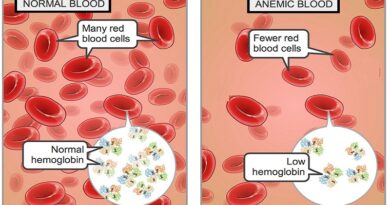Stem Cell Therapy: The New Frontier in Diabetes Treatment (2024 Update)
Recent developments in stem cell therapy offer new hope for more effective and lasting treatment options for Diabetes. Diabetes is a chronic health condition that affects millions of people worldwide. It is characterized by the body’s inability to produce or effectively use insulin and can lead to severe complications, including heart disease, kidney failure, and nerve damage. For years, managing diabetes has primarily involved lifestyle changes, medications, and insulin therapy.
This article provides an update on the latest advancements in using stem cells to treat diabetes, focusing on both type 1 and type 2 diabetes and how these developments can transform the future of diabetes care.
Understanding Diabetes:
Before diving into the role of stem cells in treating diabetes, it’s essential to understand the disease itself. There are two main types of diabetes:
- Type 1 Diabetes is an autoimmune disease where the immune system attacks the insulin-producing beta cells in the pancreas. Patients depend on insulin injections for life, as their bodies can no longer produce insulin naturally.
- Type 2 Diabetes is the more common form, where the body either doesn’t produce enough insulin or the cells don’t respond properly to insulin. While type 2 diabetes can sometimes be managed with lifestyle changes and medications, severe cases need insulin therapy.
The challenge with both types of diabetes is managing blood sugar levels effectively to avoid complications. This is where stem cell therapy can lead to a game-changing solution.
What Are Stem Cells?
They are cells from which all other cells with specialized functions are generated. Under the right conditions in the body or a laboratory, stem cells divide to form more cells called daughter cells. These daughter cells either become new stem cells or differentiate into specialized cells including blood cells, brain cells, insulin-producing beta cells, and others.
The ability of stem cells to develop into different types of cells makes them a promising tool in regenerative medicine, including diabetes treatment.
Stem Cell Therapy in Diabetes: The Science Behind It
The basic idea is to replace the damaged or non-functioning insulin-producing beta cells. Since beta cells are responsible for producing insulin, restoring or regenerating these cells can help regulate blood sugar levels more effectively.
There are several types of stem cells being explored for diabetes treatment:
- Embryonic Stem Cells (ESCs): These are pluripotent stem cells that can develop into any cell type in the body, including insulin-producing beta cells. The challenge with ESCs lies in ethical concerns, as they are derived from embryos, and the potential for immune rejection by the patient’s body.
- Induced Pluripotent Stem Cells (iPSCs): These are adult cells that have been genetically reprogrammed to an embryonic-like state. These cells offer the advantage of avoiding the ethical concerns surrounding ESCs and reducing the risk of immune rejection, as they can be created from the patient’s own cells.
- Mesenchymal Stem Cells (MSCs): These are adult stem cells found in bone marrow, fat tissue, and other areas of the body. MSCs have shown promise in regenerating beta cells and reducing inflammation, making them a potential tool for both type 1 and type 2 diabetes treatment.
Clinical Trials and Recent Advances (2024)
The past few years have seen significant progress in the field of stem cell therapy for diabetes, with several promising clinical trials and research initiatives underway.
- VX-880 Clinical Trials:
Vertex Pharmaceuticals has been conducting clinical trials using stem-cell-derived islet cells to treat type 1 diabetes. Their experimental therapy, VX-880, involves transplantation of these insulin-producing cells into patients, with early results showing that some participants can reduce their need for insulin injections. This approach offers hope for a functional cure for type 1 diabetes. - ViaCyte’s PEC-Direct Trials:
ViaCyte is another company working on stem cell therapies for diabetes. Their PEC-Direct trial involves encapsulating stem-cell-derived islet cells in a protective device before transplanting them into patients. This device allows nutrients and oxygen to pass through but protects the cells from the immune system. Early results have been promising, with some patients showing improved insulin production. - Autologous Stem Cell Therapy:
In some trials, researchers used a patient’s stem cells (autologous stem cells) to regenerate insulin-producing cells. This method involves harvesting stem cells from the patient’s body, reprogramming them into beta cells, and reintroducing them into the pancreas. This approach can reduce the risk of immune rejection and eliminate the need for long-term immunosuppressive drugs. - Stem Cells for Type 2 Diabetes: While most stem cell research has focused on type 1 diabetes, there is a growing interest in applying stem cell therapy to type 2 diabetes. Researchers are exploring how MSCs can be used to reduce inflammation, regenerate insulin-producing cells, and improve insulin sensitivity in patients with type 2 diabetes.
Challenges and Future Prospects:
Despite the significant advancements in stem cell therapy for diabetes, several challenges remain:
- Immune Rejection:
- In cases where stem cells are derived from a donor or embryos, there is a risk of immune rejection. Patients may need to take immunosuppressive drugs to prevent their bodies from attacking the transplanted cells, which can have long-term side effects.
- Cost and Accessibility:
Stem cell therapy is currently expensive, and widespread adoption may be limited by costs. However, as the technology advances and becomes more widely available, prices could decrease, making it more accessible to patients. - Ethical Concerns:
The use of embryonic stem cells raises ethical questions, particularly in certain religious and cultural contexts. While iPSCs offer a more ethically acceptable alternative, they come with their own set of challenges. - Regulatory Hurdles:
Stem cell therapies must undergo rigorous testing and approval by regulatory bodies such as the FDA before they can be widely offered to patients. This process can take years, delaying the availability of new treatments.
Conclusion: A Glimmer of Hope
Stem cell therapy for diabetes is one of the most exciting and promising areas of medical research today. With ongoing clinical trials and technological advancements, there is real hope that a functional cure for both type 1 and type 2 diabetes can be within reach shortly. While challenges remain, the progress made in recent years offers renewed optimism for patients living with this chronic condition.
As we continue to follow the latest developments, it’s clear that stem cell therapy represents a new frontier in diabetes treatment, one that could significantly improve the quality of life for millions of people around the world.




